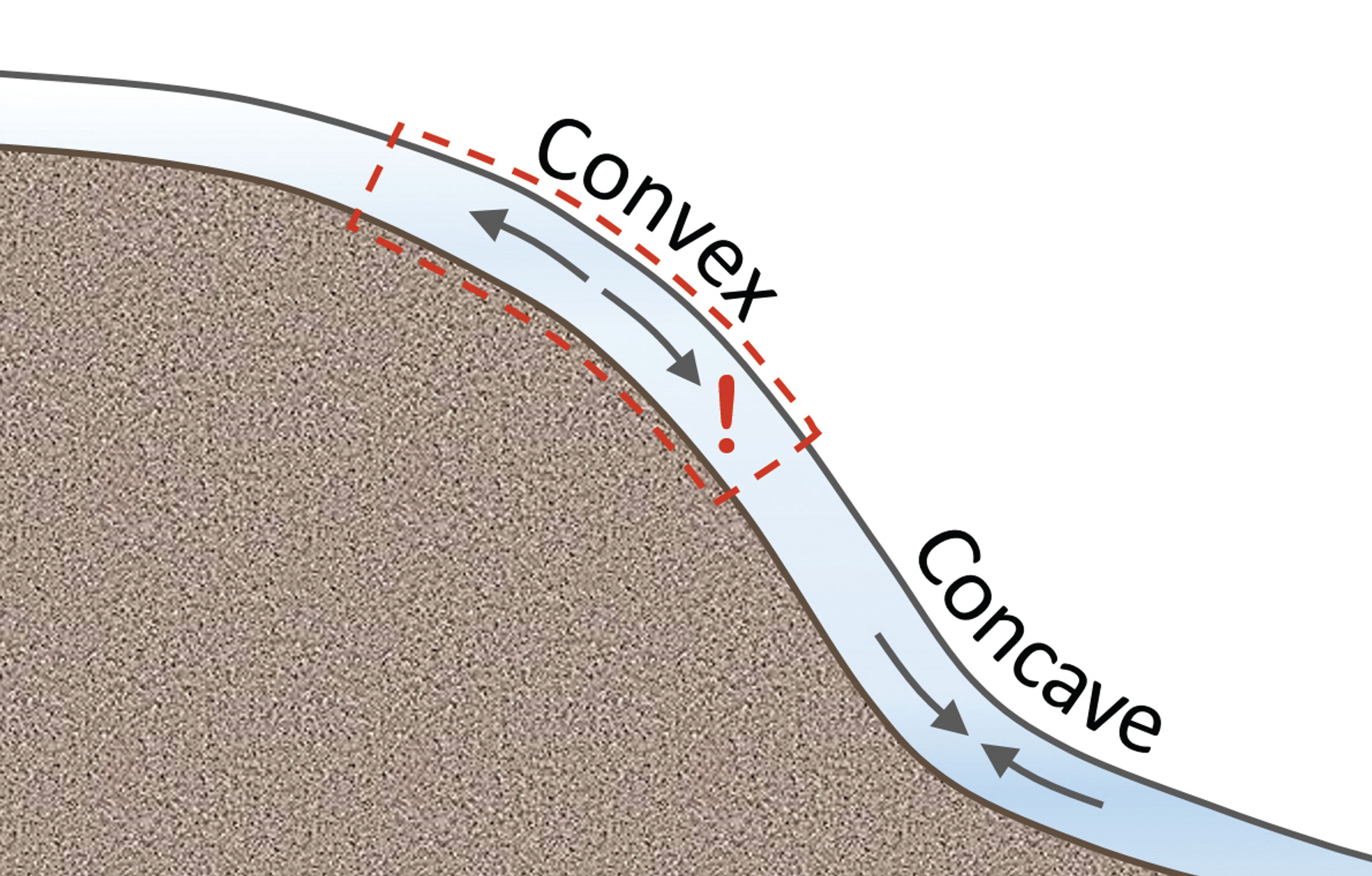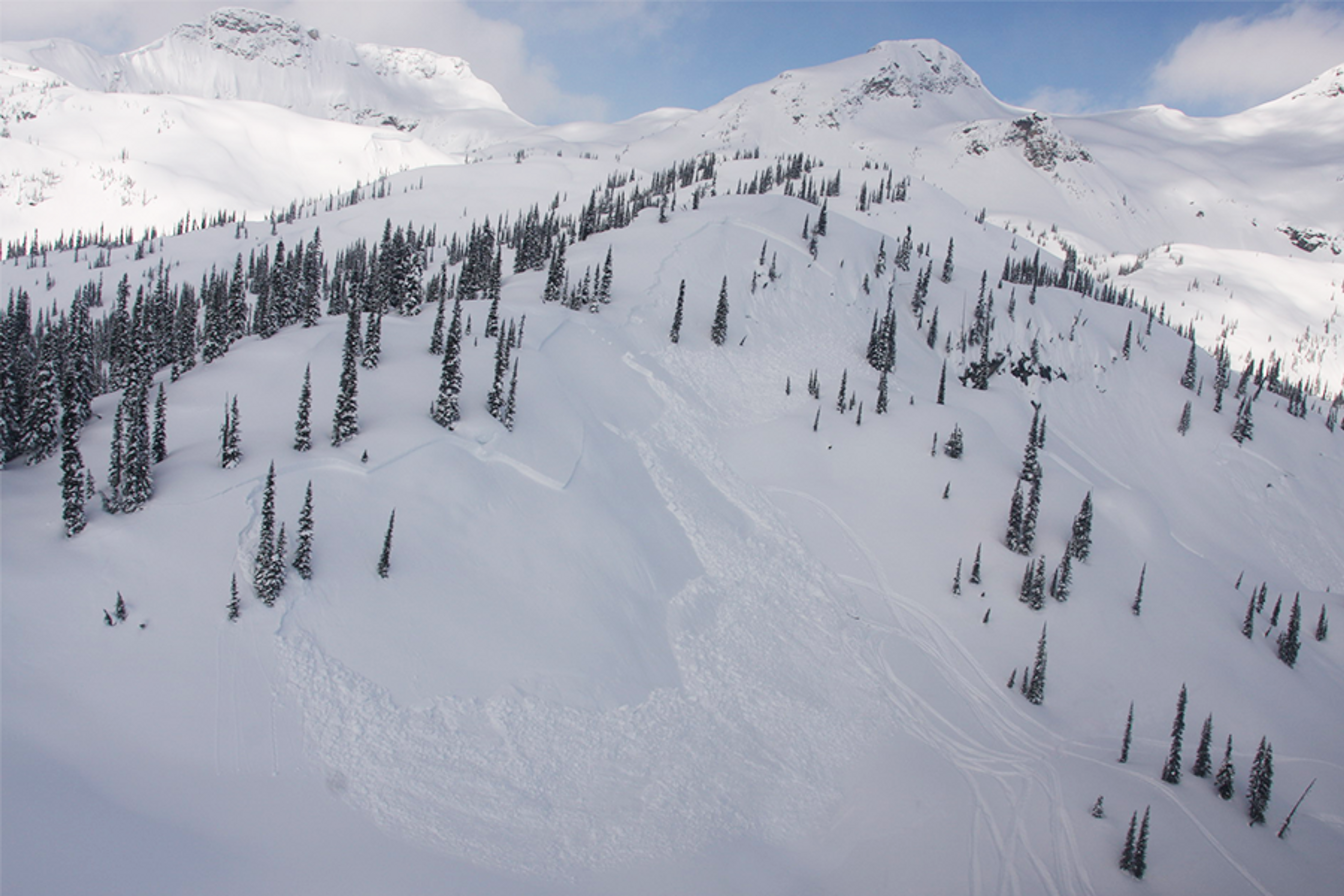Slope Size & Shape
As you would expect, bigger slopes can produce bigger avalanches. Smaller slopes generally pose a lower risk, making them a better route choice.
In terms of slope shape, avalanches happen more often on slopes that have a convex shape. That is, the slope increases in steepness as you descend. The point where the angle steepens most significantly is known as a convex roll. Avalanches will often fracture directly at or just below the roll.
Concave slopes, where the slope gradually flattens as it descends, are generally safer, as are planar slopes, which are slopes that maintain an even angle. But if a slope is steep enough, avalanches can occur regardless of the slope’s shape.

Convex slopes are more likely to be trigger points. Concave sections of small slopes can sometimes support the steeper section above.

This avalanche fractured at the top of a convex roll.
Avalanche Canada 
On a small slope like this one, the concave section at the bottom can support the snow above it. Don't count on this happening on larger slopes.
Nicole Matei